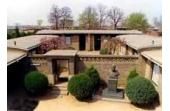Hutong Tour In Xicheng District
- Things to do
-
- Photo(12)
- Tips&article(2)
- Make it Happen
- Map
-
loading...
- Other Tours
-
- Beijing Folklore Museum
- Marco Polo Bridge
- Beijing Military Museum
- National Grand Theater
- Beijing Ocean Park
- Beijing Zoo
- The Shijingshan Amusement Park
- Beijing Museum Of Natural History
- Beijing
- Beijing Railway Museum
- Sackler Museum Of Art And Archeology
- Hutong Tour In Xicheng District
- Ming Tombs
- Birds Nest
- Xiushui Street
- Water Cube
- Bell Tower
- Beijing 789 Art Zone
- Wangfujing Shopping Street
- Beihai Park
The Beijing Hutong (old lane) areas have a very special and important position in the rich history and culture of Beijing.
The alleys give a wonderful glimpse into the world of yesterday in Beijing. While visiting the Beijing Hutong, you can appreciate the dramatic changes that the rest of Beijing has undergone.
You can see evidence of the history of Beijing, experience the old way of life and experience traditional Beijing culture. Longer Beijing tours usually include a visit to a hutong area.
Beijing hutongs, lanes or alleys formed by lines of siheyuan (a compound with houses around a courtyard) where old Beijing residents live, witness the vicissitude of the city.
What is Hutong?
Beijing hutongs, lanes or alleys formed by lines of siheyuan (a compound with houses around a courtyard) where old Beijing residents live, witness the vicissitude of the city.
The word "hutong" originates from the word "hottog" which means "well" in Mongolian. Villagers dig out a well and inhabited there. Hutong means a lane or alley, in fact the passage formed by lines of siheyuan (a compound with houses around a courtyard) where old Beijing residents live. Be care not to lost in it! It was recorded that in the Yuan a 36-meter-wide road was called a standard street, a 18-meter-wide one was a small street and a 9-meter-wide lane was named a hutong.
In fact, Beijing hutongs are inequable ranging from 40 centimeter to 10 meter in wide. The longest has more than 20 turns. Either in east-west or north-south, Beijing hutongs varied as slant, half or " blind hutongs" cul-de-sacs. The gray-tiled houses and deep alleys crossing with each other in identical appearance like a maze, you will find it much fun to walk through but be care not to lose yourself.
Hutong Culture
The name of a hutong represents its origin, location or history. It is in the gray-tiled deep lanes that families play, travel, buy goods, gossip and connect. In Beijingers' eyes, hutong means a period of history, a cordial lifestyle and even an "encyclopedia of Beijing".
Within the numerous hutongs are scattered the residences of famous personages. Laoshe, a well-known playwright is just one of them. Laoshe was born in a small lane, in the west of the city. The memory of his childhood was so dear and left such a deep impression that after he'd been away from Beijing for more than 20 years, he still clearly remembered his birthplace, and he made it the backdrop of his novel "Four Generations Under One Roof".
Many famous operas and dramas are based on the themes of hutong life. A visit to the hutongs plus a drama by the Beijing People's Art Theatre, such as "Teahouse" or "Small Hutong" in the evening will help you appreciate this fundamental part of Beijing's history.
When urban construction threatens the existence of these hutongs, Beijingers become worried. Beijing still has about 400,000 residential quadrangles now, mainly distributed over the East, West, Xuanwu and Chongwen districts. The municipal government has earmarked a number of these compounds for protection.
Courtyard Culture
The Dwelling compounds or quadrangles (Siheyuan) - the enclosed, one-story courtyard houses that make up old Beijing, feature a typical Chinese folk residential architecture.
A standard siheyuan usually falls into a rectangular compound with one-story houses squarely facing the cardinal points and a courtyard in middle.
- More introduction about courtyard culture
Beijing Hutong Zhang Folk Art Museum
The two-storied private museum houses a collection of over 1,000 pieces of traditional handicrafts and toys, as well as over 100 vintage photos and posters. It was established by a Beijing local resident who loves the traditional culture of Beijing. “Hutong”, the old Beijing alleys, is a representative of traditional Beijing culture; while “Zhang” is the family name of the museum owner, Zhang Yujun.
- More introduction about this museum
One Day Beijing Hutong Tour from $102 p/p (based on travel party of 2-3 persons)
Tips & articles
|
|










